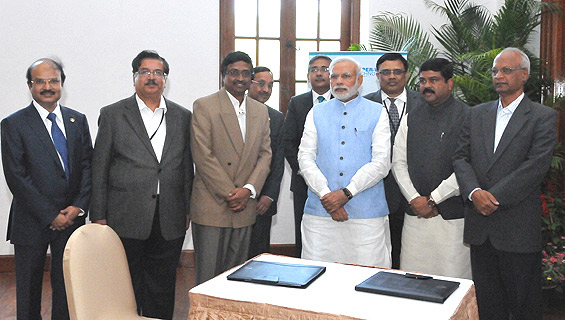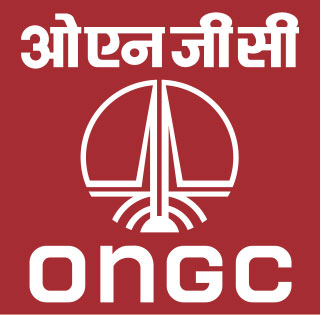Sea Survival Training
- Why is Sea Survival Training critical?
- ONGC’s Sea Survival Centre: A National, and indeed, a Global asset
- Safety is paramount and valuable
- A Training for all!
- Other important training protocols
ओएनजीसी जल-फ्रैक्चरिंग के लिए पर्यावरण के अनुकूल विकल्प की तलाश करने के लिए; आर एंड डी के लिए एक महत्वपूर्ण समझौता ज्ञापन
 From left Shri Shashi Shanker, Director (T&FS) ONGC, Prof. K.B. Akhilesh IISc Prof. G. Jagadeesh IISc, Shri. Dinesh K Sarraf, CMD ONGC, Shri Sourabh Chandra Secretary MoPNG, Hon. Prime Minister Shri Narendra Modi, Prof. T.G. Sitharam, IISc, Hon. MoS (I/c) MoPNG Shri Dharmendra Pradhan and Prof. K.P.J. Reddy IIScIn yet another step towards providing leadership in quest of indigenisation in import intensive oil and gas industry, ONGC has undertaken an important initiative for innovation in the field of hydraulic fracturing, while significantly addressing environmental concerns.
From left Shri Shashi Shanker, Director (T&FS) ONGC, Prof. K.B. Akhilesh IISc Prof. G. Jagadeesh IISc, Shri. Dinesh K Sarraf, CMD ONGC, Shri Sourabh Chandra Secretary MoPNG, Hon. Prime Minister Shri Narendra Modi, Prof. T.G. Sitharam, IISc, Hon. MoS (I/c) MoPNG Shri Dharmendra Pradhan and Prof. K.P.J. Reddy IIScIn yet another step towards providing leadership in quest of indigenisation in import intensive oil and gas industry, ONGC has undertaken an important initiative for innovation in the field of hydraulic fracturing, while significantly addressing environmental concerns.
ONGC today entered into an MoU with Super Wave Technology Pvt. Ltd. (SWTPL) for doing research on alternative technology for hydraulic fracturing. SWTPL is a company incorporated by Society for Innovation and Development, Indian Institute of Science, Bangalore.
The event was held at IISc, Bangalore in the gracious presence of Hon’ble Prime Minister of India Shri Narendra Modi.
Minister of State (I/c) MoPNG Shri Dharmendra Pradhan, Secretary MoPNG Shri Saurabh Chandra, CMD ONGC Shri Dinesh K Sarraf, Director IISc Prof. Anurag Kumar and Director SWTPL, IISc Prof Gopalan Jagadeesh were also present on this occasion.
The MoU was signed by Shri Shashi Shanker, Director (Technology & Field Services) on behalf of ONGC and Prof K P J Reddy on behalf of SWTPL.
With this partnership ONGC will provide assistance to SWTPL for developing Shock Wave Assisted Fracking Technology, an alternate to the conventional hydraulic fracturing which if proven effective as a substitute to hydraulic fracturing, in particular for shale gas exploitation, will be a game changer for the oil & gas industry.
Hydraulic fracturing requires very large quantity of fresh water and huge quantity of energy for pumping the same at very high pressures. Post hydraulic fracturing, the well produces substantial quantity of effluent water which needs to be disposed. These are some of the issues that are bothering the current hydro-frac technology. Therefore, the global oil & gas industry has been searching of late for alternate technique for fracturing which either does not require any water or minimum quantity of water.
Shock Waves are one of the most efficient energy dissipation phenomena. Sudden release of massive amount of energy in a miniscule space domain triggers the formation of these waves. The impulse generated by these waves can be used for many interesting and innovative applications.
In the present project with ONGC, SWTPL proposes to use shock/blast waves for initiating fractures/features in sandstone/shale reservoirs located initially at depths of 1000-1500m.
The MoU signed today will provide impetus for development and field implementation of Shock Waves technology for oil & gas fields. Once successful, the technology will be jointly patented by ONGC and SWTPL for further commercial benefits worldwide.

